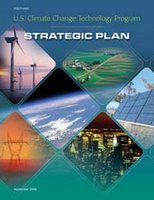After more than 150 years, the Industrial Revolution is overdue for a major retooling. No longer can we heedlessly combust biomass and fossil resources without consideration for the carbon emissions and potential energy that "floats out the smokestack." But what can possibly replace the status quo paradigm that we have based so much of our energy, industry, transportation, and lifestyle liberties upon?
 This BIO "BlogRing" - BIOstock Blog, BIOconversion Blog, BIOoutput Blog, and the new BIOwaste Blog - is intended to help identify the multi-faceted pieces of emerging biomass technologies. - is intended to help identify the multi-faceted pieces of emerging biomass technologies. Like a Rubik's cube, the parts are inextricably linked together, but currently in disarray. By addressing each facet independently, challenging issues will become clear. By shifting perspective, new collaborative solutions can be synthesized. Not just one solution but many, because the ultimate solution for any market will depend upon the resources, ecology, and stakeholders of that market.
This BIO "BlogRing" - BIOstock Blog, BIOconversion Blog, BIOoutput Blog, and the new BIOwaste Blog - is intended to help identify the multi-faceted pieces of emerging biomass technologies. - is intended to help identify the multi-faceted pieces of emerging biomass technologies. Like a Rubik's cube, the parts are inextricably linked together, but currently in disarray. By addressing each facet independently, challenging issues will become clear. By shifting perspective, new collaborative solutions can be synthesized. Not just one solution but many, because the ultimate solution for any market will depend upon the resources, ecology, and stakeholders of that market.Here are their most significant developments of January 2007, organized by blog...
BIOstock Blog--------------
• Utilizing Pine Beetle Wood Waste as BIOstock
• Japanese wood-to-ethanol facility uses Arkenol process
• CHINA: Choosing wood over corn for biofuels production
• Low heat gasification converts woody biostock to energy
• 25x'25 Vision of BIOstock Supply
• Food vs. Fuel: Over-reliance on Corn Raises Ag Prices
• Celunol produces Ethanol from Wood using Bacteria
• BIOethanol converted from pulping liquor
• Food vs. Fuel? U.S. Farmers Can Produce Both
• Black Liquor Gasification Technology Attracts Volvo Investment
BIOconversion Blog--------------
• Biomass: Year-in-Review
• Biomass Power Generation using Gasification
• ALT Energy Stocks: The Future of Ethanol
• FLORIDA: Cultivating a Bioconversion Industry
• Low heat gasification technique to convert biostock to energy
• Europe's "New Industrial Revolution"
• Celunol launches commercial-scale cellulosic ethanol plant in Japan
• Cellulose Ethanol Market Potential Report
• ACORE: President Bush on Renewable Energy in 2007
• Apollo Alliance pursues 'green-collar' jobs
• Ethanol and Net Energy - EROI
• The Renewable Path to Energy Security
BIOoutput Blog-----------------
• FAQ: BIOoutput Blog
• "Living with Ed" Begley, Jr. in Studio City
• CALIFORNIA: Governor Targets Fuel Emissions
• Electric cars - a boost for biofuels?
• CHINA: Pollution threatens 2008 Olympics
• BioButanol from Cellulosic Bioconversion
• From Food to Fuel to Fashion
NEW! BIOwaste Blog-----------------
• FAQ: BIOwaste Blog
• Spinning “Gold” Out of Trash
• Southern California Emerging Waste Technologies Forum
• The Benefits of Conversion Technologies
• Recycling’s “China Syndrome”
• Plasma Gasification and Incineration Compared
• CANADA: Municipal Solid Waste Disposal Options
• CHINA: Pollution threatens 2008 Olympics
• Using Algae to Recycle Flue Gas into Biofuels
• U.S. D.O.E.: Strategies for Reducing Greenhouse Gases
• CALIFORNIA: Air Resources Board tackles Global Warming
• Impact of Global Growth on Carbon Emissions
• Enforcing California's Greenhouse Gas Emissions Limits
• BIOwaste Energy as Explained on the Energy Kid's Page
• Expanded Recycling - a Key to Cutting Fossil Fuels and Global Warming
• Mayors seek $4B to fight Energy & Environmental Challenges
• MIT/PNNL Plasma Arc Waste-to-ethanol Solution
Each month we provide a similar breakdown of article titles from our favorite "companion" site - Biopact Blog. This list is kept current and is accessible in the right hand column of each of the three blogs.
Please forward a link to this digest to anyone you know who would be interested in keeping track of change that will affect us all. They can add their name to the mailing list on the BioConversion Blog.
technorati digest, biofuels, conversion, bioenergy, cellulosic, feedstock, ethanol


















